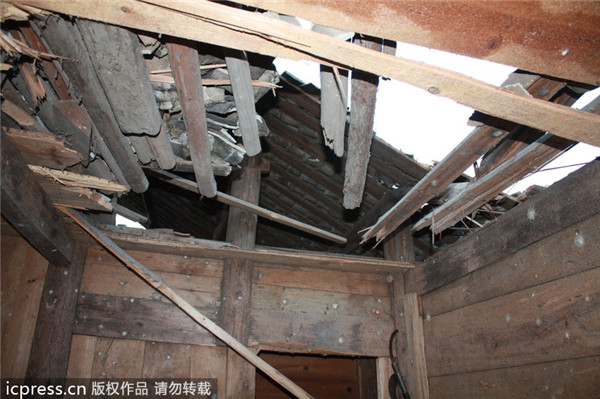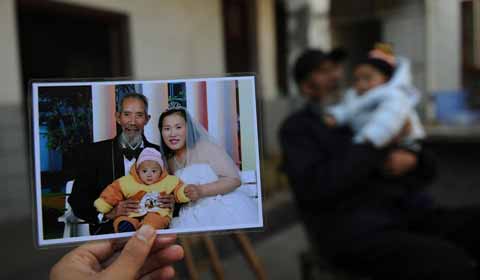'Solutions' necessary for rocket accidents
Updated: 2013-12-04 00:26
By Xu Wei (China Daily)
|
|||||||||
Experts call for insurance plan after launch debris damages two houses
Experts have called for an insurance plan to cover damage caused by space launches and re-entries after two houses were damaged by rocket wreckage in Hunan province on Monday.
The wreckage of the Long March rocket that carried the Chang'e-3 lunar probe into space early on Monday fell in a village in Suining county, Hunan province, damaging two houses.
No casualties were caused, Xiaoxiang Morning Post reported on Tuesday.
The resident of one of the houses was compensated 10,800 yuan ($1,750), and the other received 5,200 yuan after authorities assessed the damage, the report said.
Despite the timely response from authorities, experts still believe the country needs an insurance plan to cover property losses, or even deaths or injuries, after space launches.
"Suppose the rocket wreckage hit a person; what would the authorities do?" said Ren Zili, a professor of insurance laws at Beihang University.
"If the authority continues to handle the compensation by individual cases, there is never going to be a solution at the system level," he said.
China's space activities have intensified since the start of the 12th Five-Year Plan (2011-15).
The number of launches per year has climbed to as many as 20, Zhang Jianheng, deputy general manager with the China Aerospace Science and Technology Cooperation, told Xinhua News Agency.
Meanwhile, other countries and regions with active space programs such as the United States and the European Union have all established insurance plans to cover losses caused by space launches, he added. Ren said the country could borrow other countries' practices.
"Compared with the cost of the whole space mission, damages caused to third parties are a tiny amount," he said.
The launching of the Chang'e-3 lunar probe had forced the Suining county authorities to relocate 160,000 residents before the rocket blasted off.
More than 20,000 residents living near the Xichang Satellite Launch Center in Sichuan province, where the rocket was launched, were relocated to an auditorium at a primary school.
Yu Menglun, a rocket scientist and academician at the Chinese Academy of Sciences, told Beijing News that China's Long March rockets are able to maintain a fixed region for the dropping of wreckage.
"Normally we select the scarcely populated areas. The scope of the region is in general 50 to 70 kilometers long and 30 km wide," he said.
Meanwhile, the country is also researching the possibility of recoverable rockets, he said.
"They're like airplanes that could deliver space shuttles into orbit and then come back. There is no wreckage in the process and thus could provide a solution to the problem," he added.
Most Viewed
Editor's Picks

|

|

|

|

|

|
Today's Top News
Air identification zone 'beneficial to safety'
Peacekeepers depart for Mali
New urbanization plan on the way
Yuan overtaking euro in trade
US challenged on anti-dumping cases
China's economy to grow 7.5%
US calls for release of American jailed in Cuba
Staggered flu shot plan best for China: study
US Weekly

|

|













